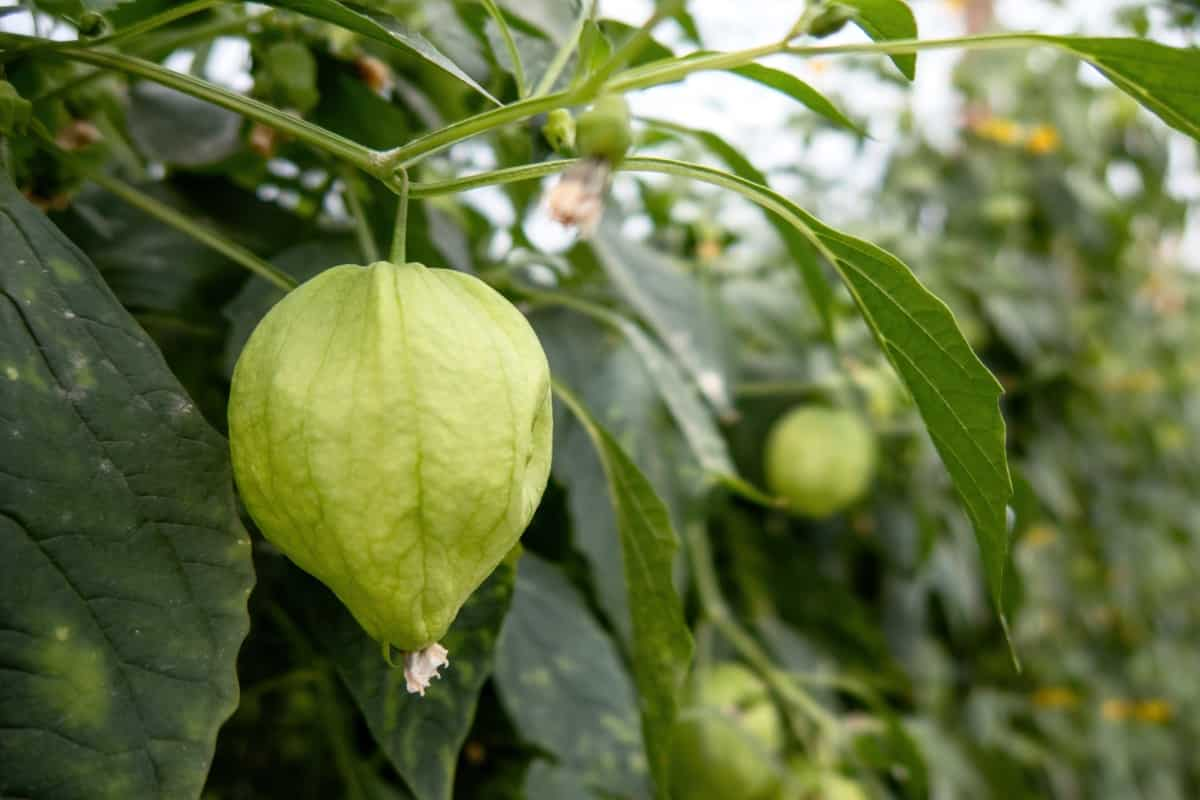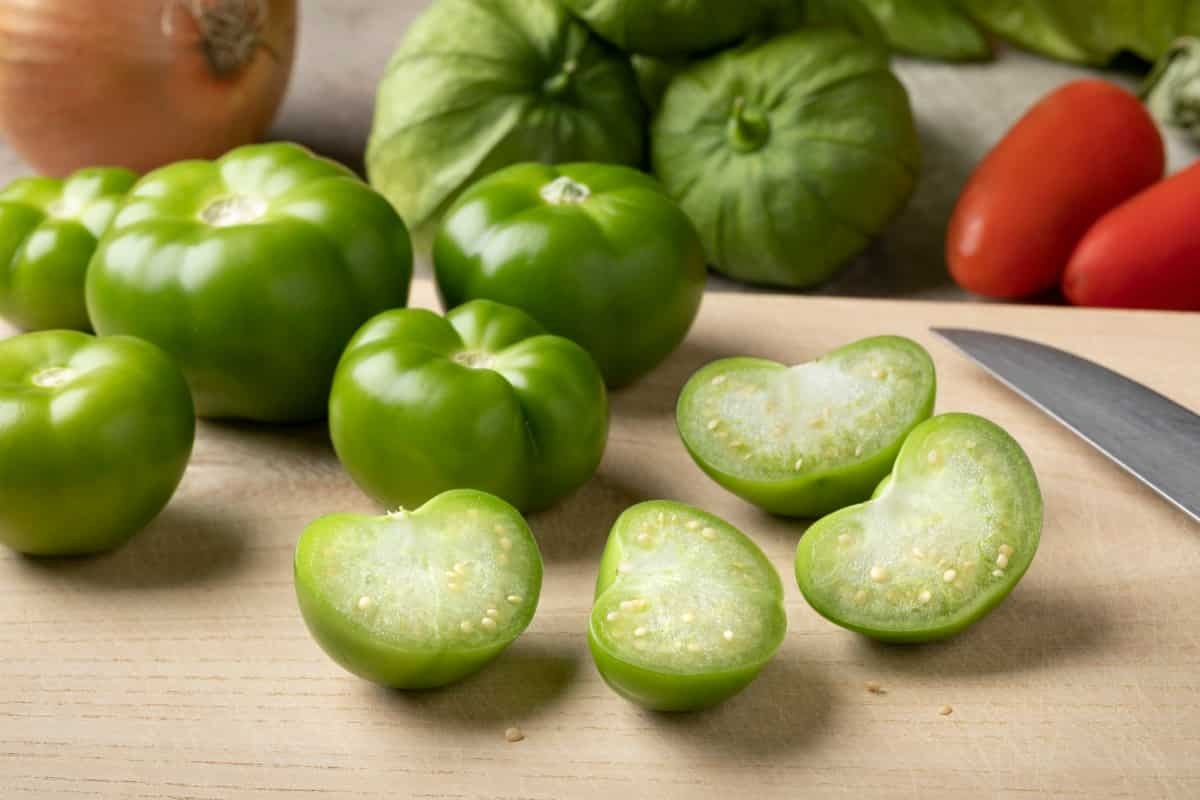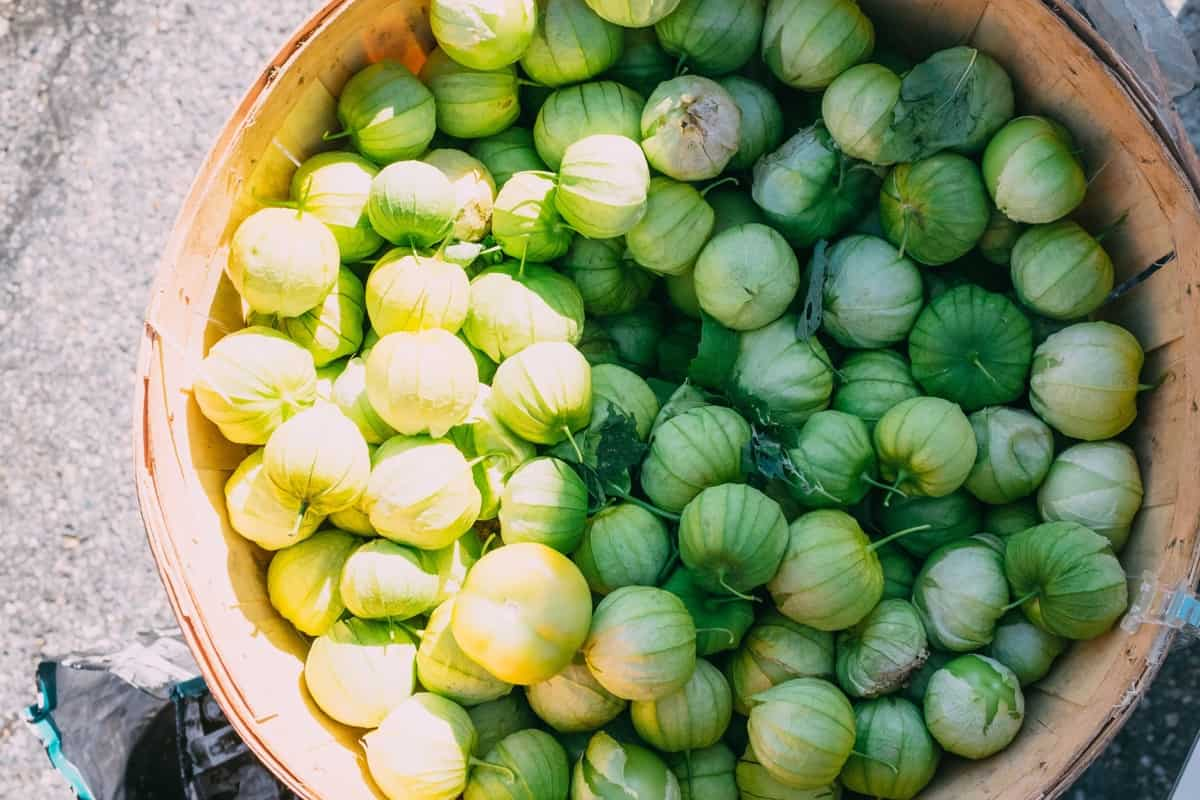Tomatillos (Physalis philadelphica) are small, round fruits commonly used in Mexican cuisine. They have a tangy and slightly citrusy flavor, which adds a unique taste to salsas, sauces, and other dishes. If you want to enjoy fresh tomatillos straight from your garden, you can easily grow them from seeds. Here, we will walk you through the steps of growing a tomatillo from seed and explain how a tomatillo differs from a tomato.

How to Grow Tomatillo from Seed: Step-by-Step Instructions
- Choose a location in the garden with full sun or prepare a large container to grow tomatillos indoors.
- Fill a seed tray with a well-draining soil mix. Moisten the soil slightly before planting the seeds.
- Place one tomatillo seed in each pot or cell, about ¼ inch deep. Cover the tomatillo seeds with a thin layer of soil and gently press it down.
- Place this seed tray in a warm spot with temperatures around 21-24°C for germination.
- Keep the soil moist consistently, but avoid overwatering to prevent seed rot. Use a misting bottle to water the seeds.
- In about 7-10 days, the tomatillo seeds should germinate. Once the seedlings have two sets of true leaves, thin them out, leaving the strongest ones.
- Transplant the seedlings to the garden or larger pots when they have reached about 6-8 inches in height. Space them about 2 feet apart.
- Support the tomatillo plants using stakes or cages to prevent them from falling over as they grow.
- Water the plants regularly, keeping the soil moist but not waterlogged.
- Tomatillos generally take around 70-90 days to mature. Harvest the fruits when they are fully grown, firm, and have filled out their husks.
Choosing the Right Soil and Location for Tomatillo Seed Germination
Tomatillos prefer well-drained soil with a pH level between 6.0 and 7.5. Sandy loam or loamy soil types are ideal. Select a location with full sun exposure, as tomatillos require at least 6 to 8 hours of direct sunlight daily. Avoid areas prone to strong winds or extreme temperatures. By ensuring suitable soil and location, you can promote healthy tomatillo seed germination.
Providing Optimal Watering and Drainage for Tomatillo Seedlings
Water the seedlings thoroughly, but avoid overwatering, as excessive moisture can lead to root rot. The soils should be left to dry slightly between waterings to prevent waterlogging. Use well-draining soil mix to improve drainage and ensure the containers have drainage holes. Additionally, consider mulching around the seedlings to retain moisture while allowing excess water to escape. Maintaining these watering and drainage practices will promote the successful development of tomatillo seedlings.
In case you missed it: 10 Best Tomatillo Companion Plants for a Flourishing Garden

The Importance of Proper Lighting and Temperature for Tomatillo Growth
Tomatillos, also known as Mexican husk tomatoes, require full sunlight exposure for at least six to eight hours daily. Insufficient light can result in weak and spindly plants. Additionally, tomatillos thrive in warm temperatures between 24-29°C. Extreme heat or cold can stunt their growth or even cause damage. Therefore, providing adequate lighting and maintaining the ideal temperature range is essential for successful tomatillo cultivation.
Nurturing Tomatillo Seedlings: Transplanting and Care Tips
Nurturing tomatillo seedlings involves careful transplanting and dedicated care. When the seedlings have outgrown their initial containers, it is time to transplant them into larger pots or directly into the garden. Ensure your plant is placed in a sunny area with well-drained soil for optimal growth. Plant each seedling in a hole slightly larger than their root ball and firmly pack soil around their roots. Water the seedlings thoroughly after transplanting and continue to water consistently, keeping the soil moist but not overly saturated. Support the plants as they grow taller, and watch out for pests.
Pruning and Supporting Tomatillo Plants for Maximum Yield
As part of pruning, you need to remove suckers, which are side shoots that grow between the main stem and the leaf branches. Removing these suckers directs the plant’s energy towards fruit production instead of vegetative growth. Supporting the plants with stakes or cages helps prevent the branches from bending or breaking under the weight of the fruit. This ensures that the plants remain upright and allows for proper air circulation, reducing the risk of diseases. Proper pruning and supporting techniques contribute to healthier plants and higher tomatillo yields.
Managing Pests and Diseases in Tomatillo Plants: Prevention and Treatment
Prevention is key to avoiding infestations and infections. Check the plants regularly to see if they show signs of pests or diseases, such as yellowing leaves or distorted growth. Implement cultural practices like proper spacing, good ventilation, and maintaining soil health to reduce the risk of infestation. In case of an outbreak, use organic or chemical treatments specifically formulated for tomatillos. Prompt action and regular monitoring are essential for successful pest and disease management.
In case you missed it: Hillbilly Tomato Overview: Taste, Size, History, Origin, Growing, and Yield

Harvesting and Storing Tomatillos: When and How to Pick the Fruits
Harvesting and storing tomatillos requires knowing the right time and method for picking these fruits. Tomatillos are typically ready for harvest when they have filled out their husks and turned a bright green or yellow. Gently twist or pull the fruit from the plant, ensuring the husk remains intact. Avoid picking still small and firm tomatillos, as they may not have reached their full flavor potential. Once harvested, remove the husks and rinse the fruits in cool water to remove any dirt or debris. Store the tomatillos in a cool, dry place or refrigerate them for up to two weeks.
Exploring the Distinctions Between Tomatillos and Tomatoes: A Comparative Analysis
Firstly, tomatillos have a thin, papery husk that surrounds the fruit, while tomatoes do not. This husk is typically removed before consumption. Secondly, while tomatoes are usually red or yellow when ripe, tomatillos are typically green or greenish-yellow. In terms of taste, tomatillos have a tangy, citrus-like flavor, whereas tomatoes have a more sweet and savory taste. Additionally, tomatillos are commonly used in Mexican cuisine, particularly in dishes like salsa verde, whereas tomatoes are used in various cuisines globally. Lastly, tomatillos are often smaller in size compared to tomatoes. Tomatillos and tomatoes both contribute unique flavors and textures to many dishes despite their differences.
In case you missed it: Juliet Tomato Overview: Taste, Size, History, Origin, Growing, and Yield

Conclusion
In conclusion, growing tomatillos from seed is a rewarding gardening experience. Following the steps discussed above, you can enjoy a bountiful harvest of these tangy fruits. Moreover, understanding the differences between tomatillos and tomatoes will help you make informed choices when cooking and incorporating these delicious fruits into your meals.
- Feed Your Flock for Less: Top 10 Tips to Save on Chicken Feed
- Ultimate Guide to Ossabaw Island Hog: Breeding, Raising, Diet, and Care
- Hatching Answers: The Top 10 Reasons Your Chickens Aren’t Laying Eggs
- Eggs and Economics: Breaking Down the Cost of Raising Backyard Chickens
- Defend Your Greens: Proven Methods to Keep Iguanas Out of Your Garden
- Ultimate Guide to Cinnamon Queen Chicken: A Comprehensive Guide for Beginners
- Ultimate Guide to California Tan Chicken: Breeding, Raising, Diet, Egg-Production and Care
- Ultimate Guide to Marsh Daisy Chicken: Breeding, Raising, Diet, and Care
- 10 Types of Chicken Farming Businesses You Can Start for Profits